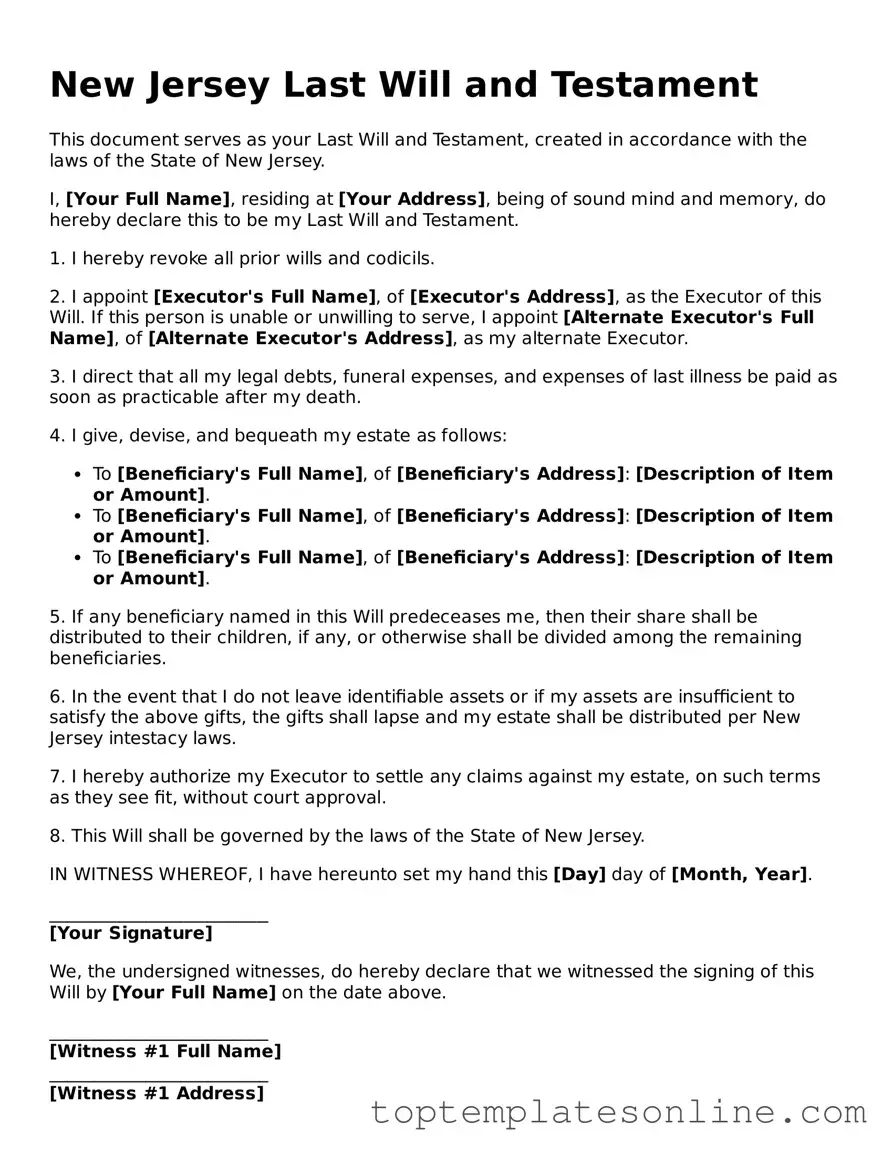Blank Last Will and Testament Template for New Jersey State
A Last Will and Testament is a legal document that outlines how a person's assets and affairs should be handled after their passing. In New Jersey, this form is essential for ensuring that your wishes are honored and your loved ones are taken care of. Understanding the specifics of the New Jersey Last Will and Testament form can help you navigate the estate planning process with confidence.
Customize Last Will and Testament Here
